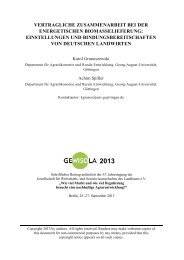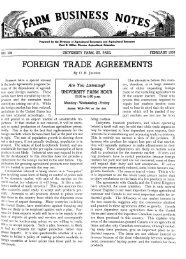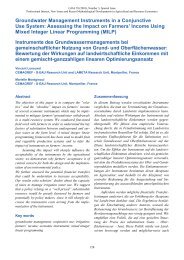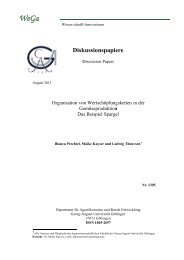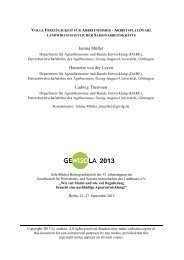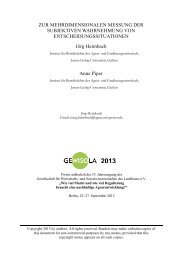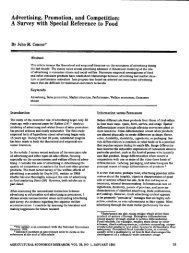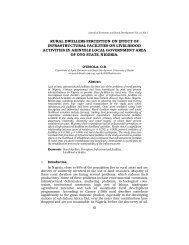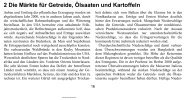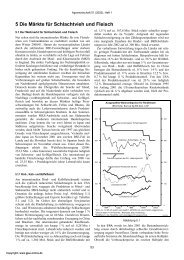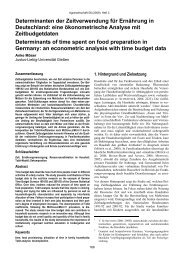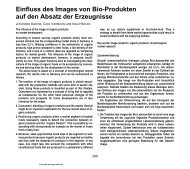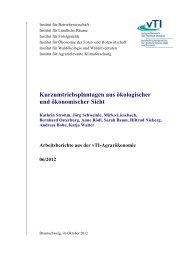District Institutes of Education and Training - Teacher Education
District Institutes of Education and Training - Teacher Education
District Institutes of Education and Training - Teacher Education
Create successful ePaper yourself
Turn your PDF publications into a flip-book with our unique Google optimized e-Paper software.
<strong>District</strong> <strong>Institutes</strong> <strong>of</strong> <strong>Education</strong> <strong>and</strong> <strong>Training</strong>: A Comparative Study in Three Indian States<br />
Annex 1 Expansion <strong>and</strong> new directions in<br />
elementary education<br />
Provision <strong>of</strong> schools <strong>and</strong> teachers<br />
Despite a policy discourse stressing the importance <strong>of</strong> elementary education, <strong>and</strong><br />
the constitutional commitment to achieving it, the elementary sector has<br />
suffered from inadequate funding allocations. About 95% <strong>of</strong> the available budget<br />
has been absorbed by teacher salaries, leaving very little over for even<br />
modest ‘quality’ aspects (buildings, playground, teaching aids <strong>and</strong> books)<br />
(Varghese <strong>and</strong> Tilak 1991). By 1997-98, 3.6% <strong>of</strong> GNP was invested in education<br />
– a significant increase compared with the 1.2% <strong>of</strong> GNP in 1960-51, but still<br />
well short <strong>of</strong> the <strong>Education</strong> Commission’s (1964-66) recommendation <strong>of</strong><br />
6% (GoI 2000).<br />
By the mid 1980s the targeted expansion <strong>of</strong> the school network to ensure universal<br />
access (i.e. a school within 1 km <strong>of</strong> place <strong>of</strong> habitation) was nearing completion.<br />
Operation Blackboard (MHRD 1987) attempted, with varying success<br />
(Dyer 2000) to lay down a norm <strong>of</strong> at least two room, two teacher schools.<br />
However, in rural areas, where there are frequently two teachers to five classes,<br />
multigrade teaching is common, <strong>and</strong> staff-student ratios continue to exceed<br />
the policy norm <strong>of</strong> 1: 40 (6AIES 1996). Further scrutiny <strong>of</strong> the access<br />
scenario in the mid 1990s revealed that this norm was not adequate to ensure<br />
all children could reach a school; this prompted the <strong>Education</strong> Guarantee<br />
Scheme / Alternative Schooling system pioneered in Madhya Pradesh, which<br />
obliges the state government to respond to a community’s request for a<br />
school if one is not available. Alternative Schools are generally staffed by a parateacher.<br />
Box A1: Para-teachers<br />
By the late 1990s, teacher shortages, fiscal crises, the continuing problem <strong>of</strong><br />
teacher absenteeism, particularly in rural areas, prompted a search for<br />
alternatives to formal teachers.<br />
Following initiatives from the Shiksha Karmi programme in Rajasthan <strong>and</strong> the<br />
<strong>Education</strong> Guarantee Scheme in Madhya Pradesh, para-teachers appeared to<br />
<strong>of</strong>fer a reasonable alternative to expensive, certificated teachers. The para<br />
teacher should be a Std. 10 pass where possible, Std. 8 if female <strong>and</strong> be local,<br />
which should obviate problems <strong>of</strong> dialect <strong>and</strong> lack <strong>of</strong> interest or sense <strong>of</strong><br />
participation in the local community.<br />
Unlike the two year, content intensive pre-service preparation <strong>of</strong> regular<br />
teachers, with a very limited teaching practice component, para teachers work<br />
in schools with occasional intensive periods <strong>of</strong> ‘on the job’ training.<br />
DFID 217



